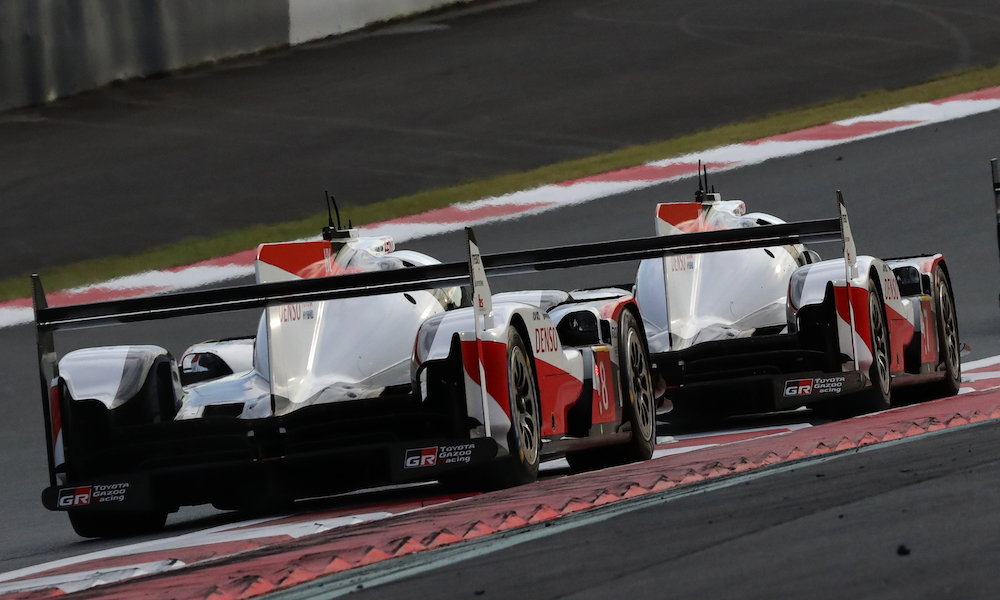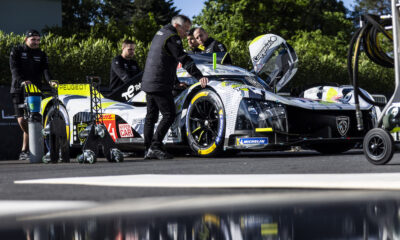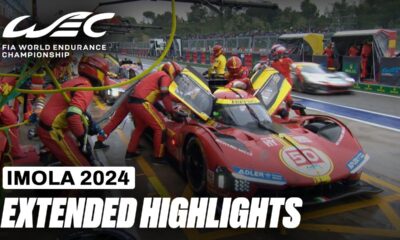
Photo: James Moy/Toyota
Toyota Gazoo Racing technical director Pascal Vasselon has described the manufacturer’s large gap to Rebellion Racing in qualifying for the 6 Hours of Fuji as “difficult to understand”.
Toyota scored its second front-row lockout of the season with its pole-winning Toyota TS050 Hybrid posting a two-driver average of 1:23.648, while the third-placed Rebellion R13 Gibson ended up 1.150 seconds off the pace.
This was a larger gap than the one between the two LMP1 teams at Fuji last year, despite the Toyotas being made a relative 1.07 and 0.67 seconds slower per lap than Rebellion through success handicaps.
Both Toyotas and the single Rebellion have all been slowed, but the Toyotas have larger handicaps because of their first and second-place finishes at Silverstone.
“We have done some analysis of the competition and we can say that Ginetta has done well, as we could have expected,” said Vasselon.
“Sadly for them, they have had a spin that has somehow disqualified their car.”
“What is really surprising, and what we have no explanation for, is the really bad performance of the Rebellion. They have lost nearly two seconds compared to last year.
“If we refer to LMP2, which is a good reference, they have lost something like 1.5 seconds. It’s very difficult to understand.
“As far as we know, they are operating the same car with the same spec. We don’t have the answer.”
Vasselon’s LMP2 comparison is based on the fact that the class pole-sitter in the LMP2 class, which does not have success handicaps, was four-tenths slower this year compared to 2018.
“It’s difficult to be extremely precise because many things have changed,” he said. “But taking LMP2 as a reference, the gap is bigger than expected.
“From our side, the success handicap impact is also a bit bigger than it was expected.
“Relative to LMP2, we have lost 1.3 seconds compared to last year, when normally we should have lost one second. It’s in the ballpark.”
Rebellion driver Gustavo Menezes, who qualified the team’s car with Norman Nato, offered an explanation for the Swiss team’s lack of qualifying pace.
The American driver described the No. 6 Ginetta’s faster opening lap, before Charlie Robertson spun to end that car’s day, as a “wake-up call” for the Rebellion squad.
“We’ve been struggling a little bit with the car this weekend,” Menezes told Sportscar365.
“We know this track doesn’t suit us, but it’s disappointing to see how far behind we were.
“We struggle generally on the low-speed circuits, mostly in terms of mechanical grip. Our car’s aero platform is great and you can see our sector two pace, but Fuji sector three is really a killer for us.
“We knew it was going to be a struggle coming here.”
Menezes suggested that this impacted Rebellion’s qualifying performance, despite its car being made only 0.33 seconds slower through success handicaps.
When asked whether he thought the success handicaps had done their job, he said: “I think it did work, if you see where Toyota was last year.
“We’re far off our pace from last year too, but the track is much harder for us. We do see it working, but they were right in qualifying and we weren’t.”






















